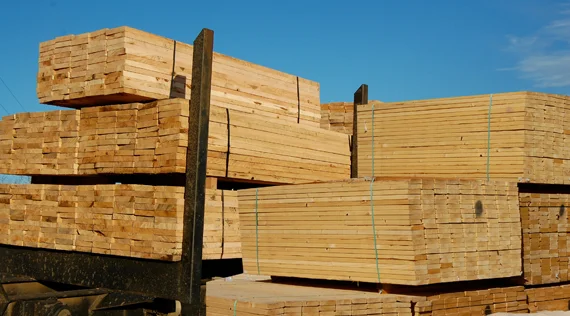
SEATTLE (Scrap Monster): According to the US National Association of Home Builders (NAHB), trade actions including imposition of duties or volume caps on softwood lumber imported from Canada would result in heavy burden for US consumers and domestic lumber industry workers. Such trade actions would lead to rise in lumber prices, which may impact home buyers, NAHB added.
NAHB noted that imposition of 25% duties on imported Canadian lumber would increase the cost of a new single family home by around $1,300. Any increase of around $1,000 would make approximately 153,000 households ineligible for average mortgages. In short, higher lumber prices would make new houses less affordable for average consumers. This in turn would hamper the slow recovery recently witnessed in US housing starts. The impact would be highly felt by construction industry. However, other sectors such as finance, insurance and real estate may also feel the heat, NAHB added.
The recent data released by the U.S. Department of Housing and Urban Development and the Commerce Department indicates that nationwide housing starts surged higher by 25.5% in October to a seasonally adjusted annual rate of 1.32 million units. Although builder optimism has shown signs of strength during recent months, any jump in lumber prices on account of duties on imported Canadian lumber may badly impact market sentiments. Incidentally, sales of newly built single-family homes dropped marginally by nearly 1.9% in October to seasonally adjusted annual rate of 563,000 units.
Meantime, National Lumber & Building Material Dealers Association stated that the terms similar to the expired 2006 deal would be acceptable. However, inclusion of quotas is feared to limit access to Canadian wood of customer’s choice. Moreover, the domestic US lumber producers are less likely to become capable to compensate for the shortfall, it added.
The duties which were originally forecast in the 25% range is now expected to go higher to close to 30-40% with Trump’s victory. However, these higher duties are unlikely to have substantial impact on big Canadian lumber firms. As per sources major Canadian lumber companies including West Fraser, Interfor and Canfor has increased its presence in the US by owning more number of US sawmills during recent times. In fact, Interfor produces more lumber from its US mills than from its Canadian mills.
B.C, which accounts for more than 50% of Canadian lumber exports to the US, has already begun exploring new options to protect the forestry sector and the thousands of jobs supported by the industry. The B.C forest industry and government representatives has been on a mission to find new markets for Canadian wood products in Asian countries including China, Japan and India, in order to reduce over-dependency on the US. The rise in exports to Asian markets may seal Canadian exporters from the after-effects of a potential imposition of tariffs on exports to the US. However, the trade actions may hurt small Canadian lumber firms who solely depend on the US market.
The lumber trade dispute between the two countries is dated back to 1982. The two countries had signed a bilateral agreement in September 2006. The original seven-year agreement had an optional provision to extend for a period of two years upon consensus by both parties. Accordingly, the deal which came to an end in 2013 was extended until 2015. As per the terms of the deal, parties were prohibited from engaging in trade actions for one-year grace period, which has already come to an end on 12th October, 2016.
| Copper Scrap View All | |
| Alternator | 0.31 (0) |
| #1 Copper Bare Bright | 3.70 (0.05) |
| Aluminum Scrap View All | |
| 356 Aluminum Wheels (Clean) | 0.71 (0) |
| 6061 Extrusions | 0.62 (0) |
| Steel Scrap View All | |
| #1 Bundle | 475.00 (0) |
| #1 Busheling | 495.00 (0) |
| Electronics Scrap View All | |